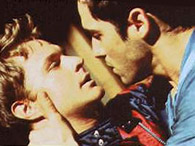The most comprehensive survey of Australians' sexual practices conducted shows that just 1.6 per cent of men identify as gay or homosexual and 0.9 per cent as bisexual although 6 per cent of men have had some same-sex experience. For women, 0.8 per cent identify as lesbian and 1.4 per cent as bisexual while almost 9 per cent of women have had a same-sex sexual encounter.

Conducted by La Trobe University's Australian Research Centre in Sex, Health and Society, the study is the country's first large-scale survey of sexual behaviour and attitudes, half a decade after the groundbreaking Kinsey Report, which looked inside American bedrooms, ever conducted. More than 19,000 people aged 16 to 59 living across Australia were interviewed by telephone in 2001-02.
The survey, which provides the first representative national data on homosexual identity of Australians, also shows that half the men and two-thirds of the women who have had a same-sex experience consider themselves heterosexual.
The survey also supports the popular stereotype that homosexual men and women have more sexual partners than heterosexuals, and gay men have more partners than lesbians.
About three quarters of gay men aged 16 to 59 had 10 or more partners in their lifetime, compared with 45 per cent of heterosexual men.
Looking at the more recent behaviour of homosexual men, the average number of partners was seven over a five-year period compared to one partner for heterosexuals. For lesbians, the median number of partners was six in their lifetime compared to three for heterosexual women.
According to the newspaper report, the survey also shows Australians who identify as gay or bisexual are more likely to report being unhappy or anxious than heterosexuals and homosexuals are also more likely than heterosexuals to have had a sexually transmitted disease and to have injected drugs.
Researchers have also recommended that further research and health programs are an urgent priority for Australia's sexual minorities.
The study also found the age at which people first have sexual intercourse has dropped over the past 50 years from 18 for men and 19 for women to 16 for both men and women.
